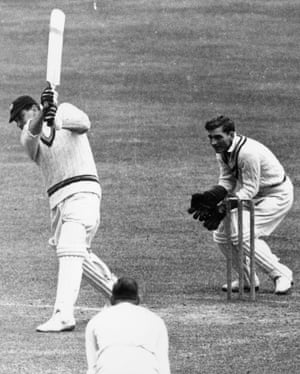
The England and Wales Cricket Board is planning to play six Test matches this summer against the West Indies and Pakistan behind closed doors from the second week of July onwards. In a grim situation this may represent the height of optimism; it would be a bonus for the armchair fans and the TV companies, even if every banal word of encouragement from behind the stumps would be echoing eerily around an empty stadium.
These plans may come to nothing but if none are made there definitely will not be any international cricket this summer. It seems the right thing to do and Steve Elworthy, a logistical expert in overseeing tournaments, is hard at work.
The detail of what is required is beyond my pay grade, but the medics, the technicians, the broadcasters, the hoteliers, the groundstaff and the maintenance staff will be brainstorming to create an environment that is biosecure (a word, now commonplace, that does not exist in my dictionary).
But what of the players? Assuming they are reassured that playing cricket again does not risk their health, will they be in a fit state to perform in a Test match? Without wishing to enhance any reputation as a curmudgeon the answer is: “Do me a favour. Of course they will.”
It was suggested a month ago by the director of cricket, Ashley Giles, that England’s players would need four weeks to be ready for a Test. Well, they may want four weeks, but they don’t need it.
If the West Indies series really can begin on 8 July, both sides will struggle to prepare but it would be wildly inappropriate for them to complain. The level of the players’ fitness and form would be a pinprick compared to other considerations and in any case “the same for both sides” mantra applies. We are in extreme circumstances.

Did Wally Hammond and Lindsay Hassett insist upon a delay to the start of the Victory Test series in 1945 to allow both sides to complete their physical and mental preparations? I don’t think so.
The crowds flocked to those matches as a visible sign of national relief and an expression of hope that life was returning to normal. That will not be possible in 2020 and there is no victory to celebrate, but there is an appetite for some live sport even if all the seats at the grounds (presumably Old Trafford and the Ageas Bowl) are empty.
With safeguards satisfied and permission granted, the players are obliged to put on a show but the matches will be hard-pressed to emulate the joyous, fraternal contests between England and the Australian Services of 75 years ago (bear in mind Don Bradman was in Australia at the time).
In fact the idea that the only way to prepare for an international is by playing several matches beforehand is now outmoded. Admittedly Sir Geoffrey Boycott has always been keen to point out the imperative of playing proper cricket before any Test, and before him Fred Trueman would not take much prompting to point out that he bowled 1,200 first-class overs every season. Playing cricket probably is the best way to prepare for an international match, but this has rarely been the way over the past couple of decades.
Modern players are not spooked by a lack of match practice. Prince among these is surely England’s white-ball captain, Eoin Morgan of Middlesex – notionally. In 2019 he played two Championship matches for his county, which was two more than he managed in 2018, 2017 and 2016.
Morgan is a national treasure after last summer’s World Cup triumph but one should also admire how he has cracked the system. He has proven that it is possible to flourish playing odd games around the globe – his latest non-international venture was for the Delhi Bulls in the T10 Super League in Abu Dhabi – in between captaining England. He still manages to deliver at regular intervals as a batsman on the international stage. That is neat.
Before the virus took hold two more unlikely characters demonstrated how it was possible to excel after being pitchforked into a Test without playing beforehand. Mark Wood played no Championship cricket for Durham last summer when he only appeared in ODI cricket for England until the World Cup final.
Yet when selected for two Test matches in South Africa in January he prospered, such was the diligence and determination of his preparations. Dom Bess did not have to deal with the constant threat of injury like Wood yet when he suddenly appeared in South Africa, a novice in Test cricket, he had not played a match since the previous September. Yet he also performed remarkably well.
It is easier for bowlers to survive without match practice. They can enhance their fitness and tune the appropriate muscles by bowling in the nets or on the square, which can be a solitary, lonely pursuit. With dedication and a carefully planned routine it is clearly possible to prepare effectively for a Test match in this way. Wood keeps proving that. It is even possible to do so and keep within the physical-distancing guidelines.
It is tougher for batsmen; it is more difficult for them to ease back into form in the middle of a Test. One mistake and they can be back in the pavilion. More than bowlers they need the rhythm of batting in a match. The magic touch has to return. But let’s not be too precious about this. The logistical challenge of playing a Test in the time of coronavirus is a massive undertaking; by comparison remembering how to bat, bowl and field is a doddle.
